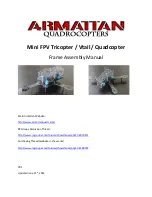
22
www.xsens.com
4
Output Specifications
Data output from Xsens DOT is represented in different coordinate systems. Each data
output is explained below.
4.1
Coordinate systems
4.1.1
Sensor coordinate system
The
sensor coordinate system (S)
is a right-handed coordinate Cartesian system that
is body-fixed to the sensor. Depicted below is the sensor coordinate system on DOT, using
small x, y and z.
Figure 10: Xsens DOT sensor coordinate system
4.1.2
Orientation coordinate system
By default, the
local earth-fixed reference coordinate system
(L)
used is defined as
a right-handed Cartesian coordinate system with:
•
X positive to the East (E).
•
Y positive to the North (N).
•
Z positive when pointing up (U).
This coordinate system is known as ENU and is the standard in inertial navigation for
aviation and geodetic applications. With the default ENU
(L)
coordinate system, Xsens yaw
output is defined as the angle between East (X) and the horizontal projection of the sensor
x-axis, positive about the local vertical axis (Z) following the right-hand rule. The origin of
the reference frame is located in correspondence of the location of the accelerometer. For
additional information on the position of the accelerometer, check out the Xsens DOT
technical drawing at chapter 5.4.
The orientation calculated by Xsens DOT is the orientation of the sensor coordinate system
(
S
) with respect to the local earth coordinate system (
L
). Xsens DOT can output a North
referenced Yaw, also referred to as Heading. By default, the orientation output is in the











































